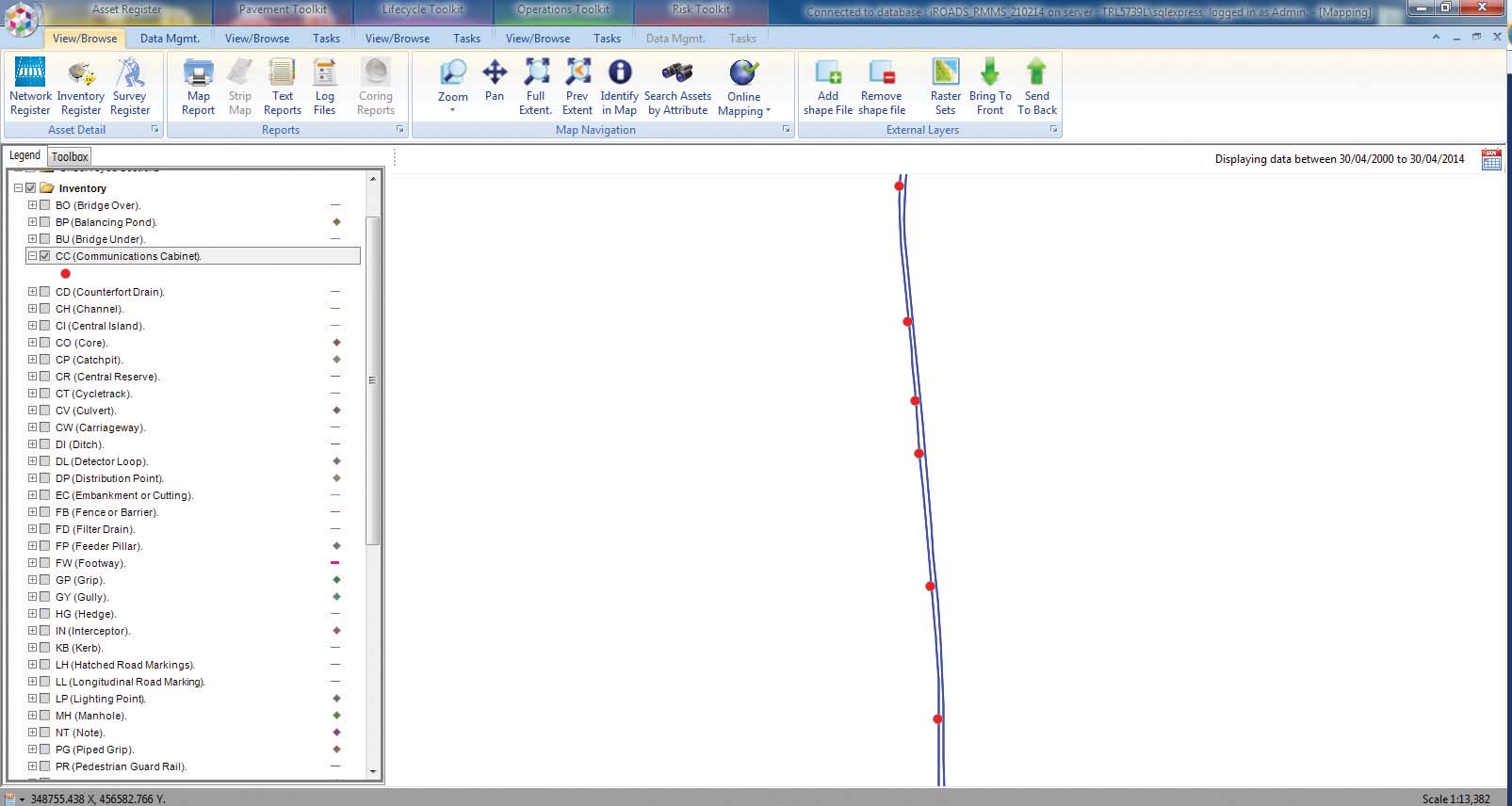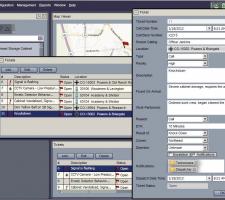
Ever-growing ITS infrastructures pose a myriad of problems for road authorities, not least of which is keeping track of an expanding inventory of equipment and ensuring everything is periodically checked, correctly maintained and calibrated if required. Proactive management of field assets, technician service calls, preventative maintenance and performance measures, needed to sustain transportation and traffic signal operations, is a critical component of the effectiveness of any ITS program.
With small systems over a limited area it may be possible to do this on a spreadsheet (although this is far from straightforward). However, once those systems expand in complexity or geographical spread, problems start to arise: should assets be grouped by type or location, how best to devise maintenance and inspection plans… and so on.
At this point a dedicated computerised system may provide a much better alternative and companies like
Econolite developed its Centracs Maintenance Management System (MMS) having managed ITS maintenance and services contract for various cities, metropolitan organisations and DOTs for more than a decade. Also geographic information system (GIS) –based, MMS is described as a real time ITS-specific field asset and maintenance management system – and one that works with non-Econolite products.
Not only does it enables signal maintenance organisations to track assets in real time, the system can also interface with Mobile Devices and it supports trouble ticket dispatch and “dispatches technicians even when no one else is paying attention”. All work orders are displayed on the map.
With the i-Roads system from TRL Appia, all road network related assets can be mapped, monitored and managed ranging from the road surface itself, line markings and drains to street lighting, traffic lights, signs, cameras and sensors.
Andy Pickett from TRL Appia says: “Mapping is a key element of the i-Roads asset management system user interface. Both the source data and outputs are displayed on the map and are referenced to the road network. This makes it easier for staff to identify where each item is located and what assets are positioned at any intersection or other location.”
In addition to each asset’s details, location and performance the system logs any error messages, reports from the public, skid resistance readings, machine surveys and motorised, foot or other inspections – again these can all be geographically referenced as well as referenced to the network using link/section/chainage referencing. Cycle lanes, footways and verges can be included to give an authority a complete picture of the condition of the road-related assets across their area.
Values recorded during the surveys can be entered directly on site using a tablet computer and the results compared to the relevant standards for that particular road section set for or by the authority to highlight risk factors. Accident location data can be utilised in the evaluation of risk factors in particular areas.
Any further checks the engineer needs to carry out while on site can be downloaded to their tablet. “Often when a check is carried out there may be no need for further action but there has to be an audit trail to show that the risk has been assessed and checked,” says Pickett.
With all the relevant data compiled, the system will highlight where intervention is needed, prioritise the jobs and define the scope of work required and can overlay on the map any faults and routine maintenance requirements allowing managers to optimise crew deployments. This may include identifying other pieces of equipment adjacent to a faulty asset and combining the repair with routine inspections and servicing of these other items.
While very different in scope, both systems log inspections, maintenance and repairs, to keep the records up to date – vitally important to highlight poorly performing equipment or materials and for legal clarification in the event of an accident, incident or claim. As such they offer potential cost savings by ensuring maintenance is carried out at the optimum point to minimise expenditure while ensuring availability and logging inspections, maintenance and repairs. This information can also highlight repeat failures and provide an audit trail to prove the assets have been properly maintained in the event of a dispute or an incident.
Pickett highlights the benefits of i-Roads’ wider scope saying: “i-Roads can coordinate the information coming from various inspections and allow an authority to, say, make the best use of a road closure to do as many other jobs as possible. It can be used for short-term repair and maintenance and also for budget planning, one, three or five years out - sometimes longer. It identifies road sections where survey readings don’t meet the specification and helps prioritise repairs taking into account factors such as whether a road is near a hospital or a school, part of a flood escape system or on a bus route.
“With i-Roads authorities can track the gradual deterioration of all road surfaces and because all the data is referenced to a map, it gives them a complete picture of their road network. The computer provides an indication of when each road is likely to require resurfacing along with an indicative cost which can be incorporated in the forward budgeting. Some of the work we have been doing looking at highway maintenance PFI contracts we have been modelling investment requirements going forward 25 years.”
If required, the asset register can include calculated financial values of road asset taking into account both replacement cost and condition. “Items such as signs and streetlights with a defined cost and estimated service life are relatively easy to assess but the value of a part-worn road, either with or without land purchase, is far more difficult to calculate, and relies on the predictive modelling of condition that an asset management system can provide” he concludes.












